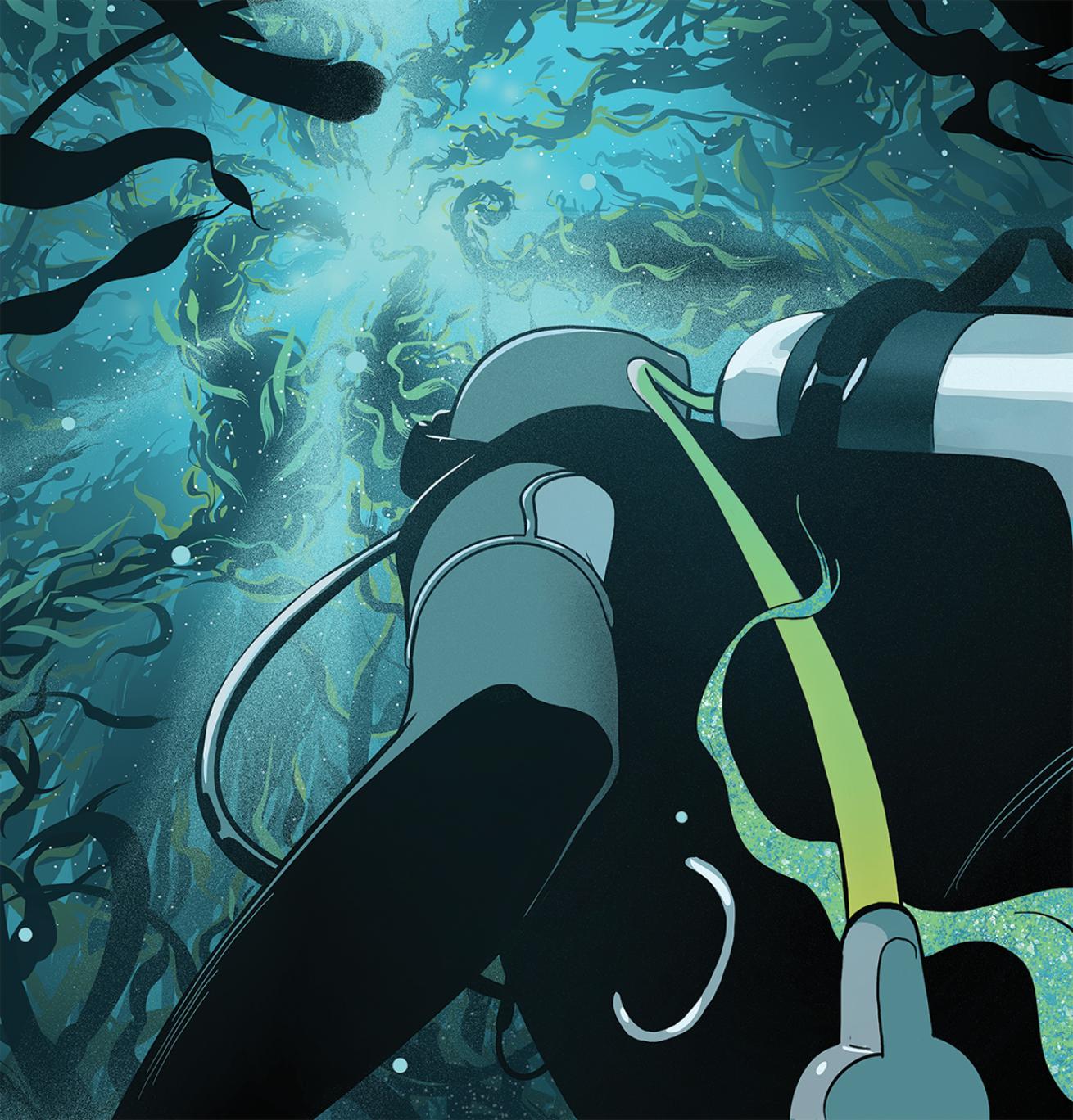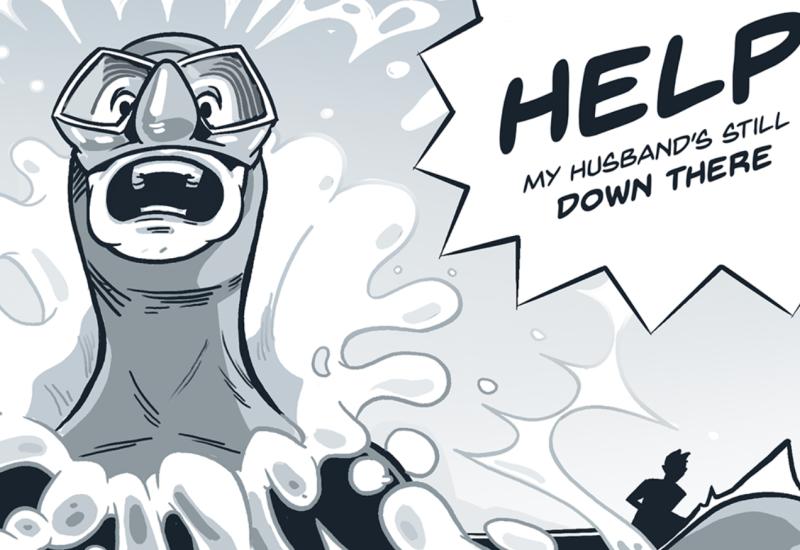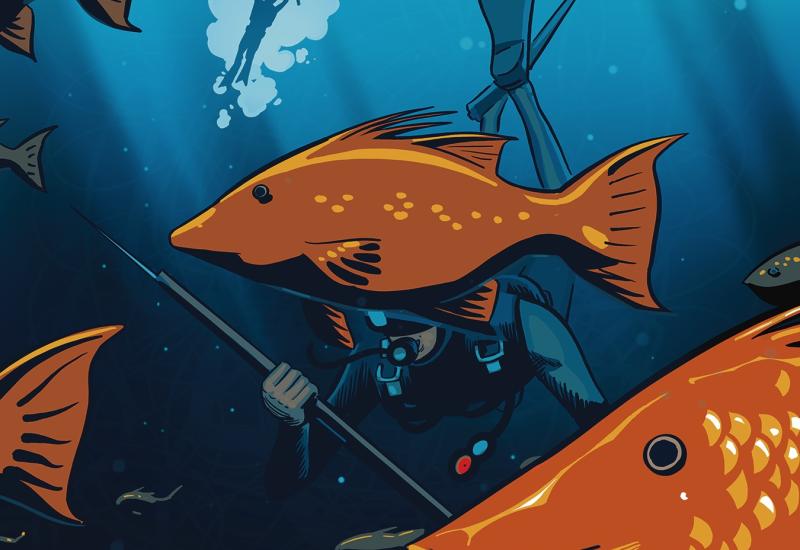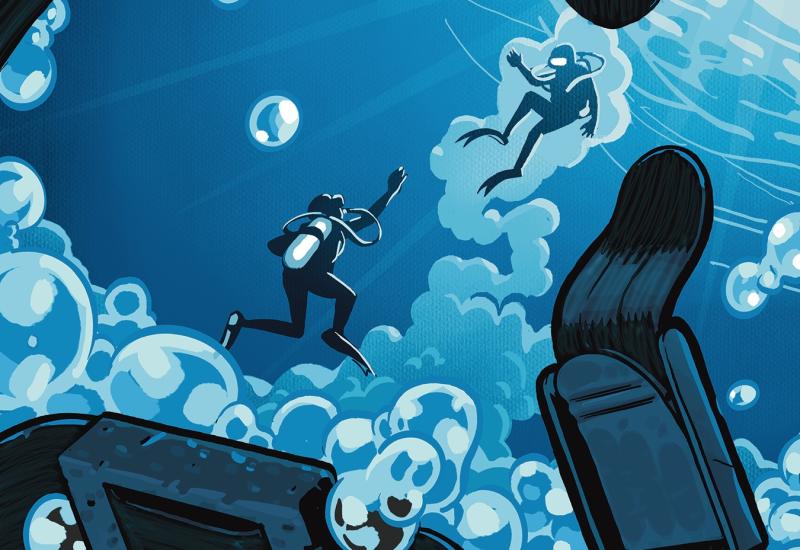All Kelp, No Help | Lessons for Life

Steven P. HughesEvery diver has a different limit. Know and respect your own.
Kelp extended from the bottom to the surface of the ocean, 60 feet above. It was thick, but allowed light to filter through, showing off the sea life that used the kelp forest as grounds for hiding—and hunting.
Norma was a little uncomfortable. She had lost contact with her dive buddy, and wasn’t sure which way to turn next. As she rotated in the water to look for signs of other divers, she quickly got herself in trouble.
The Diver
Norma was a 38-year-old certified diver who had not been diving in three years. She was overweight and trying to become more active again.
The Dive
Conditions were good. Air temperatures were in the lower 80s and water temps were in the upper 60s. There was a gentle ocean swell, making the surf entry over a rocky access area somewhat challenging, and causing the kelp to sway back and forth. The divers all made it into the water without incident.
Norma hadn’t been in the water in a long time, but some of her dive buddies finally persuaded her to come diving with them. Since her last dive, she had put on weight. Since her own suit no longer fit, Norma rented a 7 mm wetsuit to have adequate exposure protection. She was using her own dive gear otherwise.
There were five divers in the group. When Norma was an active diver she loved underwater photography, so she brought her camera along for this dive.
She was a little nervous as she geared up, but told her buddies she was excited to get back in the water.
The Accident
The divers made the short swim from the rocks into a protected cove. They found an area that was relatively free of kelp and began their descent.
Norma was a bit winded from the swim, but she settled down once she got underwater. It took her a little while to adjust her buoyancy, but after a few minutes she got herself stabilized.
Almost immediately, Norma began taking photos of the fish hovering in the kelp forest. She started to relax and enjoy herself.
After stalking a bright-orange Garibaldi through the kelp and getting a photo she was happy with, Norma looked around for her group. She couldn’t find anyone. After searching for a few minutes, Norma began to ascend, hoping to sight the other divers or at least see their air bubbles rising toward the surface, to get an indication of where her friends were.
Norma never made it to the surface, and she never regained contact with her dive group. Her body was recovered two hours later, entangled in kelp at 30 feet of seawater.
Analysis
Kelp diving is a beautiful experience. Like any diving environment, though, it comes with its own unique set of challenges.
Giant kelp, known scientifically as Macrocystis pyrifera, is the largest type of seaweed and the largest type of algae in the ocean. Under perfect conditions, it has been known to grow as much as 2 feet in a day, and can grow to be 100 feet or more high. It grows in cold-water locations and provides a habitat for many types of sea life.
You can break kelp by snapping it, and it cuts easily with a dive knife. However, if you become severely entangled in kelp it can be difficult to manage because it is nearly impossible to break just by pulling on it. Divers who regularly dive in kelp typically carry dive knives in case they need to free themselves.
Kelp tends to grow in environments with wave action and surge that causes it to sway back and forth. If you aren’t paying attention, it’s easy to find yourself entangled. At that point, kelp is as effective as a fishing net floating in the water. Entanglement only gets worse if you struggle.
In Norma’s case, if her buddy had been close by, she could have been freed from the kelp and continued her dive with no problem. It has happened to me and every other diver I know who dives in kelp.
It’s important to keep an eye on your buddy and stay close enough to lend aid in the event of a problem.
Some divers take on the additional training, equipment and risk that comes with being a solo diver. For the rest of us, it is important to keep an eye on your buddy and stay close enough to lend aid in the event of a problem. Diving in a group is a great way to spend time with friends, but it is still important to make sure everyone has a buddy.
A common occurrence in dive accidents is an improper response to the situation. Panic quickly spirals to perceptual narrowing to tunnel vision. At that point, you can’t stop and think your way through a problem. There are many cases of dive accidents where a diver has gotten in trouble and died with air still in their tank.
In Norma’s case, while searching for her dive buddies, she likely got tangled in the kelp and continued to twist and turn, only making the entanglement worse. If she had stopped and caught her breath, taking a moment to realize what was going on, she likely could have freed herself. Or a dive buddy could have come and freed her.
Nearly 20 years ago, two doctors, David and Lynn Colvard, did a detailed study on panic. It was originally featured in The Undersea Journal in 2003 but is available for download. The work offers valuable insight into the problems that come with panic underwater.
The biggest problem is the onset of perceptual narrowing. The more panic increases, the fewer options a diver—or anyone—has to think through the problem and free themselves. Fight-or-flight instincts take over, and in a diving entanglement situation, that isn’t helpful.
When you find yourself in trouble, some advocate to stop, think and then act. I’ve always liked to throw breathe in there as well. Take a deep breath, get yourself under control and then think through the problem. On his website divepsych.com, David Colvard advocates for a series of breathing exercises to practice dealing with panic.
Another thing that might have prevented Norma’s accident is if she had taken a refresher. It had been three years since she made a dive. Some dedicated time with a dive instructor to review skills, especially self-rescue and local environmental familiarization, would have helped her think through the entanglement problem before it got out of control.
Lastly, Norma should have left her underwater camera on the beach for this dive, and probably a couple more. This was her first dive in a while, and she needed to shake the rust off and get familiar with diving again. The camera provided a distraction, and an encumbrance when she got entangled.
Like many dive accidents, this fatality wasn’t caused by a catastrophic problem but rather a series of small problems and inadequate responses to them. These are things every diver can learn from, whether they dive in cold-water kelp forests or not.
Lessons for Life
Take a refresher. If it’s been a while since you’ve been diving, take a refresher with an instructor to brush up on self-rescue skills.
Practice emergency skills. Take a few minutes on your next dive—safety stops are a great time to do this—and remove and replace your mask or your regulator. Familiarity with these skills is vital to comfort underwater.
Stop, think, breathe and act. If you find yourself in a difficult situation, force yourself to slow down and think through the problem before it gets out of hand.










